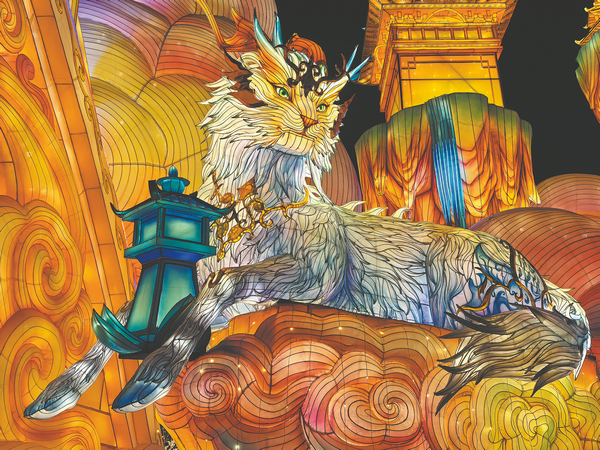

To create a festive atmosphere for visitors during Spring Festival, the local government has sponsored a lantern festival in the garden-like museum, which covers nearly 29 hectares, for 17 consecutive years since 2009.
In the Time Corridor of the museum, visitors find lanterns shaped like colorful flowers.
Near the Ruins Hall, where relics including gold, jade and ivory from the Jinsha Ruins were unearthed after being discovered in 2001, visitors can see lanterns showing the altar of the ancient Shu people with its famous sunbird gold foil. Shu is the ancient name for Sichuan.
The best-known relic is the sunbird gold foil, which National Cultural Heritage Administration adopted in 2005 as China's symbol of cultural heritage.
More than 500 kilometers from the Jinsha Site Museum, a lantern fair that started in late November and ends in late March is being held in Miyi, a county under the administration of Panzhihua in Sichuan.
Unlike those in Chengdu, the lanterns in Miyi are uniquely placed in the spacious Anning River and feature bumper rice harvests and a carp jumping over a dragon gate.